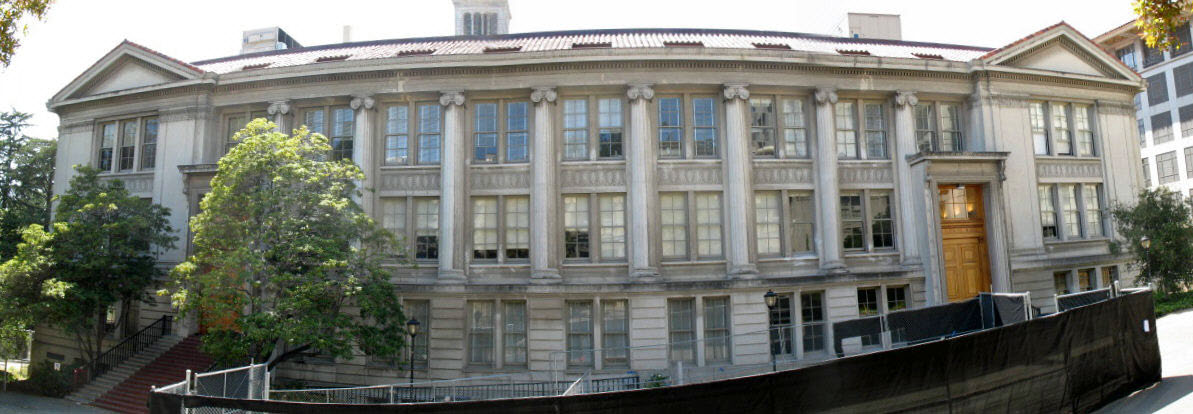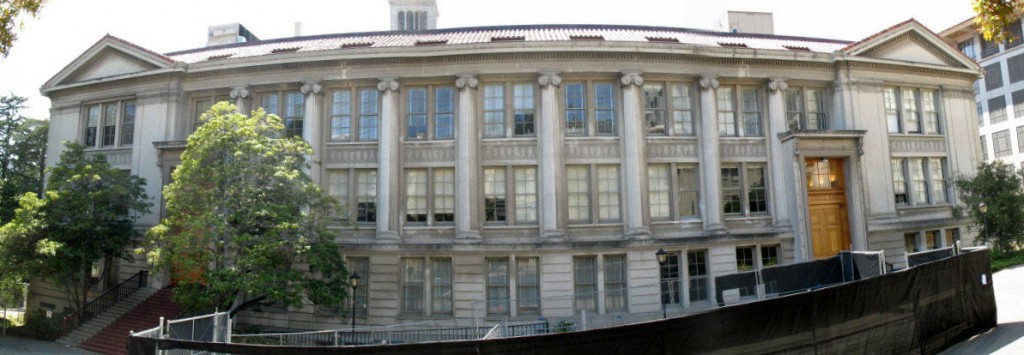A UC Berkeley physics building and a local elementary school both share a controversial namesake: LeConte. The LeConte brothers were influential professors at UC Berkeley during the 1860s, and the younger brother John LeConte went on to become the campus’s president from 1876-1881. The essence of the dissent over their names appearing on public school buildings can be boiled down to one point: Before moving to California, the two brothers had owned slaves at their Georgia plantation and manufactured munitions for the South during the Civil War. When the Union army burned their town and plantation to the ground, the LeConte brothers’ primary source of income was incinerated. Both brothers eventually turned to academia for employment. The brothers arrived at Berkeley and proceeded to have illustrious careers as academics and in Joseph’s case, a conservationist (Joseph was a charter member of the Sierra Club with John Muir during its beginnings in 1892).
Although the LeConte name was respected during the 19th century, it is not so well received today. Numerous Berkeley residents have contacted the Berkeley Unified School District requesting the name of LeConte Elementary School be changed. Members of the UC Berkeley community have voiced similar concerns about the building on their own campus.
Before I comment, I’d like to acknowledge that as a privileged, white male, I am certainly at times unaware of the psychological repercussions of institutionalized racism — both overt and and implicit. I simply aim to argue that insufficient funding in low-income communities does more to perpetuate educational inequality than names on buildings.
Lobbying for a name change opens up a potentially endless debate. How many degrees of separation from “evil” does one need before he or she is deemed innocent? Out of curiosity, I Googled a map of the UC Berkeley campus and started typing the buildings’ namesakes into my search engine. My first target, James K. Moffitt, didn’t seem to have any skeletons in his closet. My second try was more interesting. George Hearst’s name appears on multiple buildings on the UC Berkeley campus. His dad also appears to have been the biggest slave owner in his entire township, yet there are no calls to remove his name from school property. The distinction between George Hearst and Joseph LeConte’s moral standing is ambiguous and subjective. Hearst witnessed and undoubtedly profited from slavery and in this case, the fact that he didn’t own slaves himself seems to be enough reason to keep his name on campus. Nevertheless, one could easily make the argument that Hearst’s association with slavery deems him an inappropriate namesake for a campus building. Such debates are exceedingly speculative and theoretical, and ultimately revolve around an initiative that is more of a symbolic gesture than an educational reform.
In the name of consistency, replacing the LeConte name with another would call numerous historical heros into question — many whose namesakes or likenesses appear on public property. George Washington, Thomas Jefferson and William Clark (of the Lewis and Clark expedition) are just a few slaveholders who are immortalized on public buildings. There is a private liberal arts school in Oregon called Lewis and Clark College. Is that acceptable? The LeConte brothers actively supported the Confederate Army but Hearst didn’t. George Washington freed his slaves in the end, but Thomas Jefferson chose not to. Where do we draw the line?
Some scenarios are more black and white. The display of symbols or allusions to racist ideologies have no place on public property. The removal of the Confederate flag from the South Carolina State Capitol earlier this year was a century and a half overdue. An American state capitol was flying the flag of a defeated nation — a flag that is still being used as an expression of hatred and bigotry. Even if only a small percentage of those displaying the flag actually embody these qualities, that small number is enough.
The LeConte name is not analogous to the Confederate flag. LeConte Hall is named after a former UC Berkeley president and his brother because of their contributions to paleontology, entomology, geology, wildlife conservation and to the administration of UC Berkeley itself.
Institutionalized racism in American education can be traced to more quantifiable factors. A Center for American Progress study found that a 10 percent increase in minority student population correlated with a decrease of $75 in spending per student. Forty percent of low-income schools receive a disproportionately small share of state and local funds. These are concrete ways in which minority students are especially disadvantaged by public policy. There are also tangible way to address this issue. Whether it be in the congressional arena or in a voter initiative, we can find objective ways to level the playing field. In the battle against racial inequality in education, the most headway can be made from the bottom up, giving low-income schools the resources to help students thrive in competitive academic environments, rather than from the top down, by taking LeConte’s name off a building wall.
Schuyler Whiting writes the Wednesday blog on how the environment affects Berkeley, and how Berkeley affects the environment. Contact him at [email protected].




